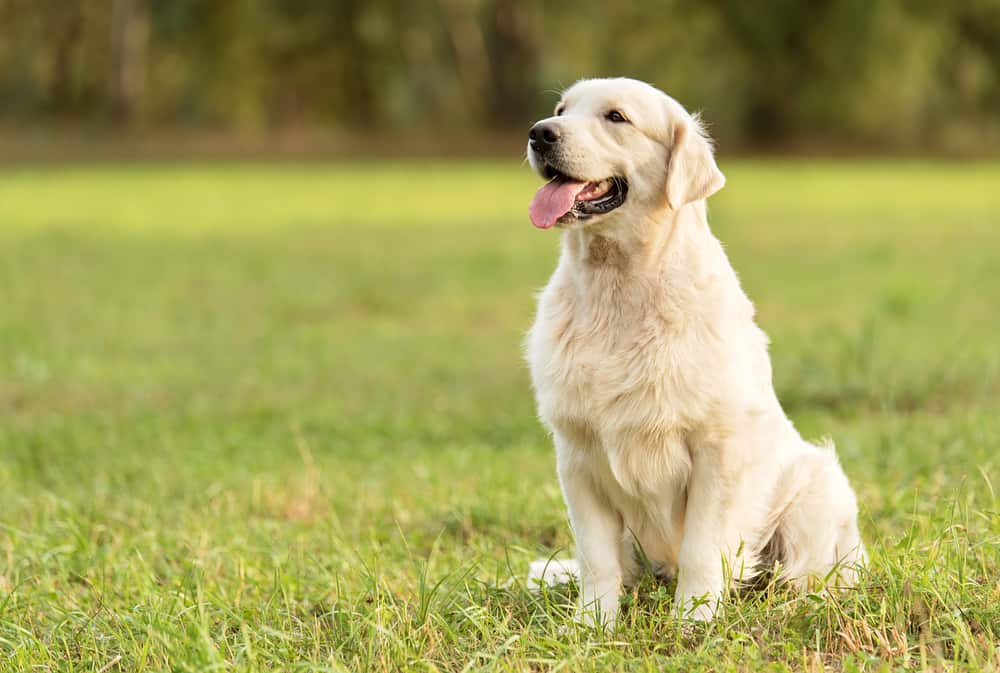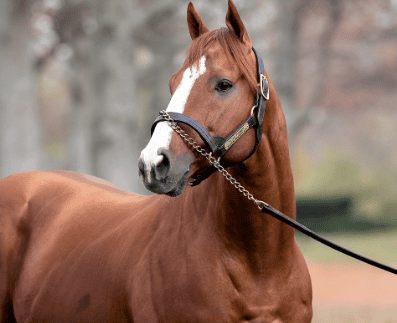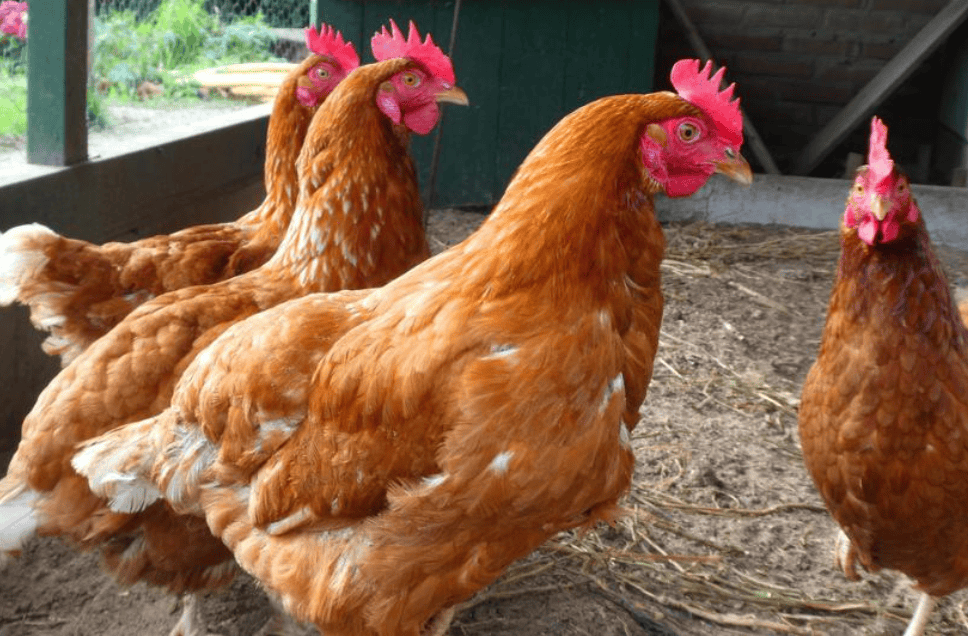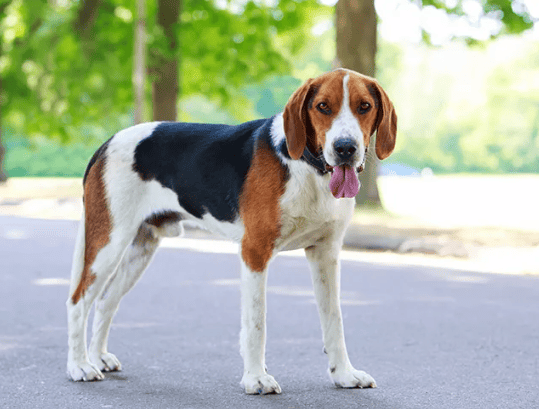Whether you’re thinking about adopting your first furry friend, or just curious about the different breeds of dog available, it’s worth doing your research.
A heartbreaking reality is that most people go out of their way to adopt a dog, but then find themselves ill-equipped to properly care for it.
Dogs can bring a lot of love into your life, but you have to be prepared to give them love and affection first. We’ve compiled a list of the most popular dog breeds, plus some tips on how to treat your new pet with all the care it deserves.
Are Dogs Good Household Pets?
Dogs are called “man’s best friend” for good reason. Since the beginning of human civilization itself, we have bred dogs into the quintessential pet and companion.
According to one study, 63% of Americans own a dog.
Dog owners consider their pets a part of the family, and they certainly fill a unique role in driving companionship. Dogs can act as “guards’’ protecting the home from strangers, or be active playmates for children. In recent years, dogs have increasingly played the role of emotional support animals.
On an individual level, though, a dog is only as good as its master. When raised with care and attention, a dog will be loyal to a fault and a doting animal: if improperly trained–or worse, outright neglected–a dog may be withdrawn, wary toward humans, and potentially hostile.
Dogs are a high-maintenance animal. They require a comfortable home, plenty of food, and regular stimulation to keep them healthy and alert. If you feel like you might not be able to adequately care for a dog, then it might be best to wait until you’re better able to deal with the responsibility.
What is the Best Type of Dog?
Ask any dog owner what breed is the best for a pet, and chances are they will respond with whatever breed they currently own.
You can’t really go wrong with any dog breed, but it’s important to know the general behavior and personality of a particular breed before you make a decision.
Below is a list of common domestic dog breeds and gathered some basic information to help you decide which one would be the perfect friend for you.
Labrador Retrievers
Originally bred in the United Kingdom, Labradors are one of the most popular breeds of dog to have as a pet. In a 2019 study, they were named the most popular breed in the world.
Labs are very playful and friendly, which makes them a perfect pet for families. Their energetic personality can be mistaken for hyperactivity, but most dogs grow out of this behavior by the time they reach adulthood.
(To satisfy their love for running and playing, it’s best to have a large yard for them to roam around–routine walks are also a good alternative.)
Their intelligence and obedient nature have also made Labradors a common breed for service dogs. They can be trained for a variety of purposes, from seeing-eye dogs to emotional support animals.
German Shepherds
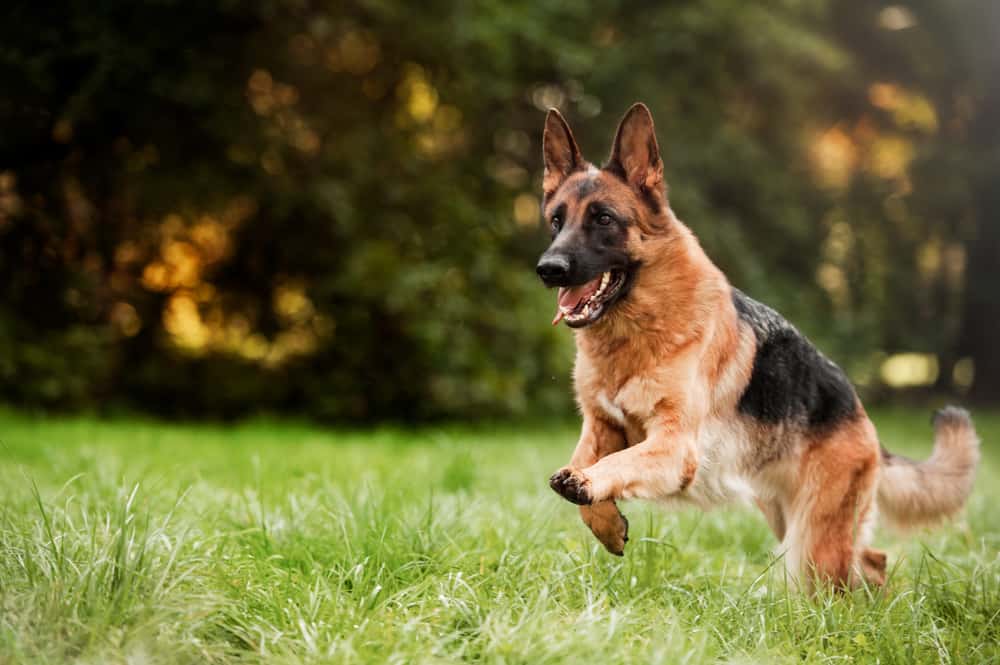
German Shepherds are another highly popular breed and are known for their loyalty and bravery. They are one of the more modern dog breeds, with the earliest known Shepherds being domesticated in 1899.
Shepherds are fiercely protective of their owners and family members and may need to be socialized in order to have them recognize strangers as friends. They are also an inquisitive breed and enjoy having a “duty” to perform.
Because of their willingness to work and learn, German Shepherds are used to performing a variety of tasks. They are commonly known as police dogs or guard dogs but were originally bred for herding sheep.
(Hence the “Shepherd” part of their name.)
Keep in mind that their alert nature means that they might be constantly barking, even if the thing they’re barking at is harmless. If you live in a place where loud noise isn’t allowed, such as an apartment, then it might be best to opt for a more quiet breed.
Golden Retrievers
Closely related to the Labrador, Golden retrievers share the popularity of their cousins: they consistently rank in the Top 3 most popular breeds of pet dogs.
Purebred Golden retrievers are also commonly enlisted in dog shows.
This popularity lies in their behavior. Like Labradors, Golden retrievers are famously friendly animals who have a love for exercise and playing. They are also incredibly patient–a leftover from their days as hunting dogs, when they would need to wait long hours before coming across prey.
Like their Labrador relatives, they are common service animals.
There are actually some differences between the British breed and American breed of Golden retriever. British breeds are muscular and have lighter fur, while retrievers born in the United States tend to be lanky with a darker coat.
Bulldogs

Bulldogs are stout, muscular dogs known for three things: their pushed-in noses, their underbites, and their tendency to drool. They aren’t an attractive breed by conventional standards, but are no less loyal or friendly than any other dog.
In the past, bulldogs were an aggressive breed, but centuries of breeding and obedience training have resulted in a calmer nature for modern bulldogs. They rarely bark, and love human company: French bulldogs, a subspecies of bulldog, have been observed to undergo separation anxiety if their owner is away for too long.
They also make for good lap dogs, despite their heavier weight.
Bulldogs can be a bit stubborn at times, so persistent training is a necessity if you want them to behave properly. They also don’t need as much exercise as other dogs, but this is because of a natural health complication.
Their short faces make it more difficult to breathe, so they can get exhausted very easily.
Note: While they may appear similar, bulldogs are not the same as pitbulls. Pitbulls are a hybrid breed descended from bulldogs, but are distinguished by their longer legs and more prominent muzzles.
Poodles
Poodles have a reputation for being “fancy,” likely due to how common the breed is in dog shows and exhibitions. But beneath the posh exterior is a breed that is loyal, remarkably intelligent, and (surprisingly, to most people) no stranger to enjoying playing or roughhousing.
The poodle is a highly intelligent animal, and they are the 2nd most intelligent breed of dog in the world.
(Only the Border collie is more intelligent.)
Because of their intelligence, poodles love to be mentally stimulated. They adore playing games, with one particular favorite being hide-and-seek. They’re very calm, too, which makes them the perfect breed for families with children.
(Children make for great playmates, after all).
Beagles

The quintessential dog breed. Beagles are among the most popular dogs in the world, famous for their gentle attitude and small size.
Beagles are incredibly friendly animals and are quick to make friends with strangers: while this makes them excellent pets, it does make them poor guard dogs.
They get along great with children, other dogs, and even cats.
A beagle’s sense of smell is among the sharpest of any dog breed. Their long ears trap scent particles, which allow them to keep on a scent trail for long periods of time. These traits have made beagles a common breed as drug-sniffing dogs and pest-detecting dogs.
However, beagles can be difficult to properly train. They operate on a one-track mindset: they can be easily bored by things not currently on their mind. Beagles can also suffer from separation anxiety if left alone for too long, and may destroy furniture if left unattended.
(Training can help prevent these destructive tendencies).
Rottweilers
Pop culture has given rottweilers a fearsome reputation. Movies, television, and even the news would have you think rottweilers are an aggressive dog breed, violently lashing out at people for no reason.
Not helping matters is that rottweilers physically appear similar to Doberman pinschers, another dog breed that has been improperly labeled as vicious.
In reality, rottweilers only behave this way if abused or neglected. The average rottweiler, while territorial and wary of strangers, is very caring to those it trusts. Around their owners and family members, they act exceptionally playful.
Rottweilers are a hardy breed. Their stocky build is a remnant of their days as working dogs, and they are naturally very healthy. Diseases are rare in the breed, though like all dogs, they are susceptible to things like obesity or tumors.
Generally, rottweilers are recommended for experienced dog owners rather than first-time adopters. Not only will a seasoned owner see past the rottweiler’s negative media image, but also be aware of how much effort it takes to properly train.
Pointers (German Shorthaired)
Shorthaired pointers are a versatile breed–they were bred as hunting dogs, so they are very athletic. They require regular exercise for both their physical health and their mental health.
Like other dogs, pointers can become bored if left alone or without anything to stimulate them. They are a careful, observant species that doesn’t immediately warm up to strangers–with enough time, though, they will recognize a stranger as a friend.
Training at an early age is essential for a shorthaired pointer. They are incredibly active in their youth, and failure to give proper exercise and obedience training can cause the dog to develop destructive habits. Since pointers are hunting animals, they might occasionally bring home “trophies” like birds, rodents or even cats: it’s important to break this habit before they mature.
(If you plan to own a pointer as a hunting dog, though, you can train them to know the difference between acceptable prey animals (i.e small game like rabbits) and animals that are off-limits.)
Pembroke Welsh Corgis
Corgis are small, short-legged dogs that were originally bred for herding livestock. Nowadays they are more commonly found as household pets: famously, Queen Elizabeth II owned over 30 corgis over the course of her reign (and even more before she became queen in 1952).
Corgis absolutely love attention, and will do anything to please their owners.
(This makes them incredibly easy to train).
They tend to follow their owners around wherever they go, and get along great with children or other pets if properly socialized.
However, some corgis have a tendency to nip at people’s ankles. This is an instinct for them, left over from the days when they nipped at the ankles of livestock to herd them easier.
Proper training can break this habit.
Dachshunds
Commonly known as “wiener dogs” due to their sausage-shaped bodies, dachshunds were originally bred to hunt burrowing animals like badgers and rabbits. Nowadays, they are commonly found performing in dog shows.
Dachshunds are known to be highly intelligent, but are also rather aggressive for their small size. This aggression stems from a desire to protect their owner, so they will bark loudly at any strangers who come too close.
(In one study, 20% of dog bites were caused by dachshunds.)
The breed is also known for being rather stubborn, since they are difficult to housebreak and train. Humorously, dachshunds are remarkably confident about themselves in spite of their small size: they may challenge larger dogs for no reason, even if the larger dog in question is completely docile.
While dachshunds can be a great pet, it will take a great deal of patience before you can properly train them to be obedient.
Yorkshire Terriers
Yorkshire terriers, called “yorkies” for short, are some of the smallest dogs in the world. They only weigh a maximum of 7 lbs, and are commonly grouped in with similarly-sized breeds as part of the “toy dogs.”
(If you’ve ever seen someone carrying a dog in their purse, or have at least heard of the stereotype, then it was likely a toy dog.)
Yorkies are known for their lush, silky coats of fur. Longer hair is typical for the breed, though shorter fur is also common.
They are very intelligent and alert dogs, so regular stimulation is required to keep them engaged and entertained. This also has a positive side effect of yorkies making for good watch dogs, though they will have to be trained to not bark at certain visitors or strangers.
The breed is rather delicate, given its small size. Yorkies have extremely sensitive digestive systems, and are prone to vomiting or diarrhea if any major changes are made in their diet. They are also more likely to be injured in falls, even minor ones, and must be treated very gently by owners.
Despite their fragile health, yorkies can live as long as 20 years, far longer than many larger breeds of dog.
Australian Shepherds
Despite the name, these dogs are not originally from Australia. They were first bred in the United States and are a rather new breed–these shepherds first appeared in the early 20th century.
(The breed also goes by several other names, which range in accuracy: Spanish Shepherd, California Shepherd, New Mexican Shepherd and Austrian Shepherd being a few.)
Since they were bred as working dogs, Australian Shepherds love engaging in all sorts of activities. Even something as simple as learning to perform tricks stimulates it physically and mentally. Today, working shepherds are put to work as ranch dogs.
Australian Shepherds are also very loyal to their owners. They aren’t as prone to barking as other dogs, and if they are not exercising or otherwise burning off energy, the breed is very reserved and relaxed.
Fun Fact: Because of their eagerness to work and friendly behavior, Australian Shepherds were commonly used as performing animals. They typically appeared in movies or shows set during the Old West, and were also common in rodeo shows.
Boxers
Boxers were originally bred from bulldogs, and the family resemblance is immediately obvious. While not as short as the bulldog, the boxer has a similarly-shaped head and muzzle, an underbite like that of bulldogs, and equally strong jaws.
By nature, boxers are a gentle breed. They are popular family pets, as they are incredibly patient with children and are highly protective of their family. Boxers can be more difficult around similarly sized dogs, possibly seeing them as rivals, but they are otherwise nonaggressive.
In addition to being family pets, boxers are commonly trained as service animals. Their gentle personality makes perfect as seeing-eye dogs or therapy dogs, while their agility and intelligence has made them useful in police and military forces.
However, boxers can be host to a litany of health problems. Tumors are unfortunately common in the breed, as are conditions like epilepsy and hip problems. They can also be susceptible to dental problems, which in turn leads to bad breath–fortunately, these issues can be prevented with proper dental care.
Siberian Huskies
Bearing a striking resemblance to wolves, Siberian Huskies are popularly known as sled dogs up in Canada and Alaska. They are most famous for running medicine to the town of Nome during a diptheria outbreak in 1925, with Balto and Togo being the most notable of the dogs involved.
(The famous Iditarod dog sled race, held annually in Alaska, follows the exact route that the sled dog teams took from Anchorage to Nome.)
As house pets, huskies are unique among other dogs–much of their behavior is left over from their days as pets for the Chukchi people native to Siberia (an Asiatic people equivalent to the Inuit peoples in North America). Huskies were bred for centuries in family settings, and so are already accustomed to living in homes with children–in fact, they are so good with kids that they may be especially protective of them.
Huskies are not an aggressive breed whatsoever, showing no wariness of strangers or even other animals. In fact, attempting to teach a husky how to be aggressive can actively worsen the dog’s mental state: thus, they are not meant to be used as hunting or guard dogs.
However, huskies have a high prey drive: the need to hunt smaller animals. This is due to 2 factors–aside from being obvious descendants of wolves, the Chukchi would allow their huskies to roam in the wild during the summer, when food was plentiful. This has also made huskies a rather independent breed, meaning they aren’t as prone to separation anxiety as other dogs.
Their independent personalities can make them rather stubborn, so early training is important. It’s also best to keep an eye on your husky whenever possible, as they have a tendency to “escape” from their owners and roam free for a while.
Fun Fact: Huskies rarely bark. Owing to their origins as wolf-dogs, they are more inclined to howl.


